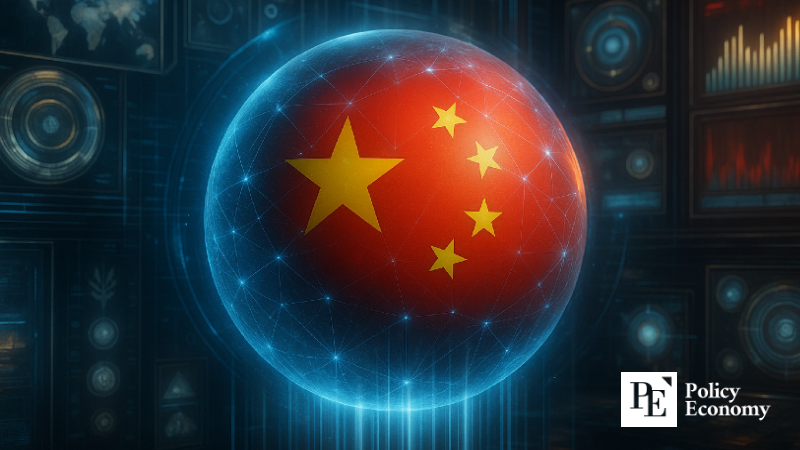China Grooms Guizhou as a “Strategic Rear Base” in Trade War with U.S.
Input
Modified
Amid U.S.-China Tensions, China Boosts Inland Economic Zones Guizhou Province Sees Heavy Investment in Aviation and Digital Economy Building New Growth Engines for Economic Security

China is developing Guizhou Province, a mountainous inland region once among the poorest in the country, into a “strategic rear base” in preparation for an extended trade war with the United States. As Guizhou emerges at the forefront of China’s economic transition, Beijing aims to integrate inland provinces to expand domestic demand and build an industrial structure resilient to external shocks.
Economic Integration of Ten Inland Provinces to Boost Domestic Demand
According to the South China Morning Post (SCMP) on July 9, Chinese authorities are considering a plan to integrate 10 inland provinces, including Guizhou, into a single economic zone as part of the country’s upcoming long-term economic roadmap—the 15th Five-Year Plan (2026–2030), set to be officially announced in March next year. SCMP reported, “Amid the U.S.-China trade war, China is fully preparing for the long haul,” adding that the new plan is expected to “reshape China’s economic and industrial landscape.”
Previously, Beijing-based think tank Pangoal Institution proposed in a May report that China should integrate the economies of 10 inland provinces including Guizhou to strengthen the domestic market and counter external risks. During the 1960s and 1970s, China adopted the Third Front Movement—a strategy to relocate critical industrial facilities, including defense plants, to interior regions amid tensions with the Soviet Union. However, in 1978, under Deng Xiaoping’s reforms, the country shifted focus to coastal development, prioritizing regions like Guangdong, Jiangsu, Zhejiang, and Shanghai.
The Pangoal Institution stated, “Now is the time for a new shift,” predicting that the 15th Five-Year Plan will likely revive a strategy akin to the Third Front Movement. The report said the plan would urge state-owned and private enterprises to intensify investments in inland regions. “This redistribution of regional economic functions will help offset external uncertainties and foster new growth drivers,” it concluded.
From Poverty Zone to Advanced Industry Hub
Guizhou was designated a “rear base strategy” target at a Chinese policy decision-making meeting in December 2023. At a preparatory meeting for the 15th Five-Year Plan on May 28, Xu Lin, Guizhou’s Party Secretary, emphasized, “We will leverage Guizhou’s comparative advantages in alignment with national strategy.” Geographically located between the Guangdong-Hong Kong-Macao Greater Bay Area and the Sichuan-Chongqing Belt—which together account for 20% of China’s GDP—Guizhou connects inland and coastal regions and is favorably positioned for attracting foreign investment and linking with Southeast Asia.
Despite its rugged terrain historically deterring investment, Guizhou has seen significant infrastructure development over the past two decades, including the construction of numerous high-elevation highways. The province is home to COMAC, the manufacturer of the C919 passenger aircraft, and has seen substantial growth in big data, data storage, and computing industries. Tech giants like Huawei and Tencent have launched operations in Guizhou, and major U.S. firms—including Apple, Qualcomm, Intel, HP, and Oracle—have established big data centers there. Digital services now account for half of Guizhou’s GDP.

Natural Conditions Ideal for Data Infrastructure
The focus on Guizhou is largely due to its favorable climate for data center construction. With high elevation and cool weather, Guizhou naturally reduces the heat output of internet data centers (IDCs). The region’s mountainous terrain and mild climate make it an optimal location for such infrastructure. Taiwanese electronics manufacturer Foxconn, for example, built a wind tunnel-style data center between two mountains that uses natural airflow for cooling. Alibaba founder Jack Ma once said, “If you missed investment opportunities in Guangdong and Zhejiang 30 years ago, go to Guizhou now.”
It’s no exaggeration to say that Guizhou’s transformation into a big data valley was “decided by nature.” The region’s stable climate—with an annual average temperature of 23°C—and low risk of natural disasters such as earthquakes or floods make it ideal for natural cooling and secure data storage. Guizhou also boasts abundant energy resources, including fossil fuels like coal and renewable sources like solar and wind, resulting in low electricity costs. The local electricity rate is around USD 0.062 per kilowatt-hour—about 20% lower than the national average of USD 0.076.
Luo Yi, Deputy Director of Guizhou’s Foreign Affairs Office, explained, “Thanks to the province’s karst terrain—covering 73.8% of the area—and its cool and disaster-free climate, Guizhou rapidly developed into a big data valley.” He added, “We offer reduced utility rates—including electricity and water—to businesses in the valley, which is a major advantage for companies with substantial server equipment.”





















